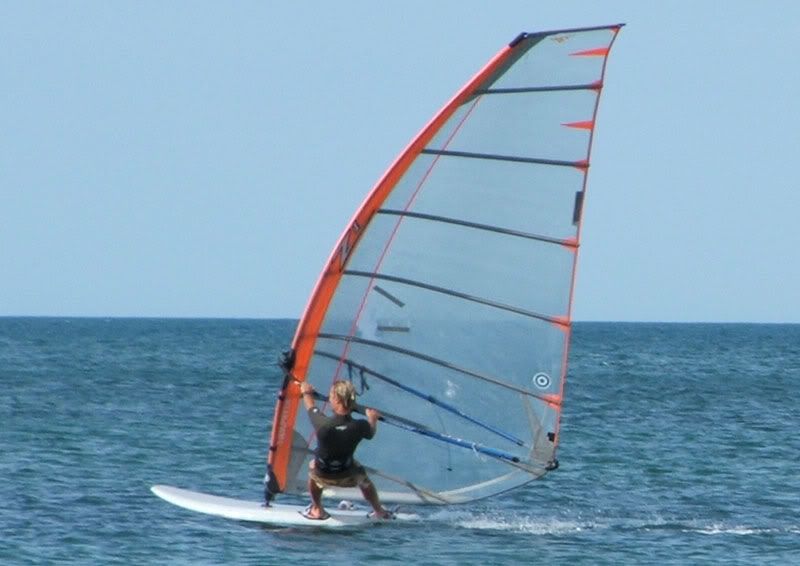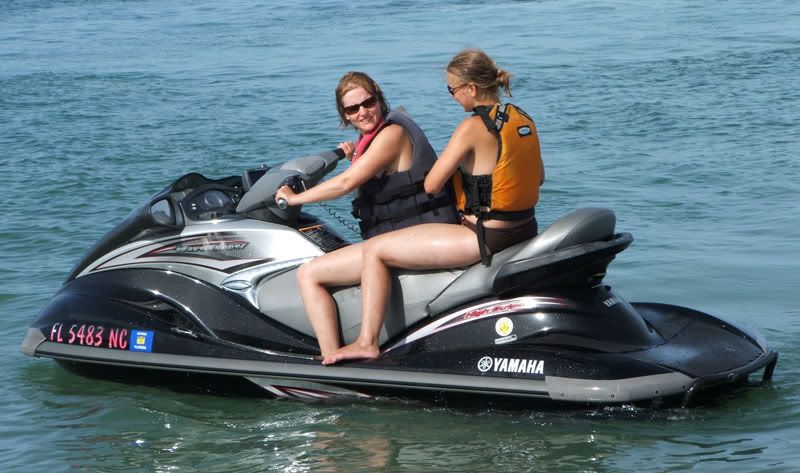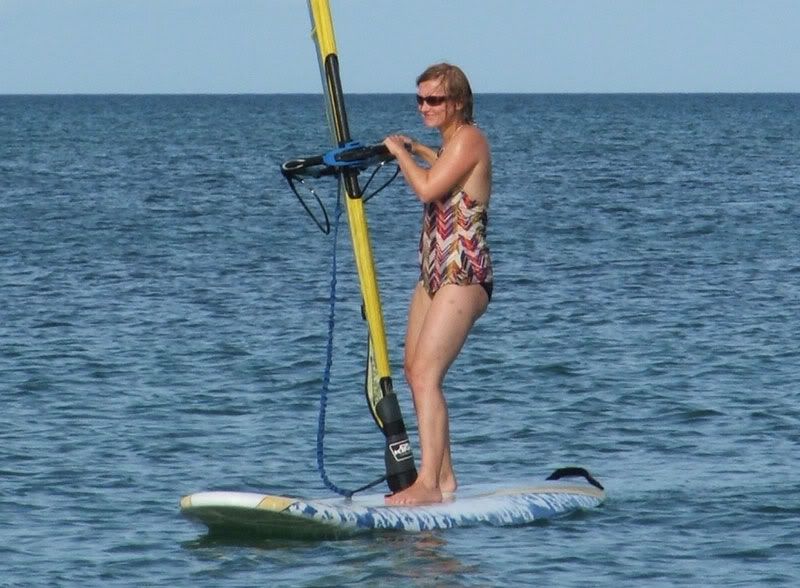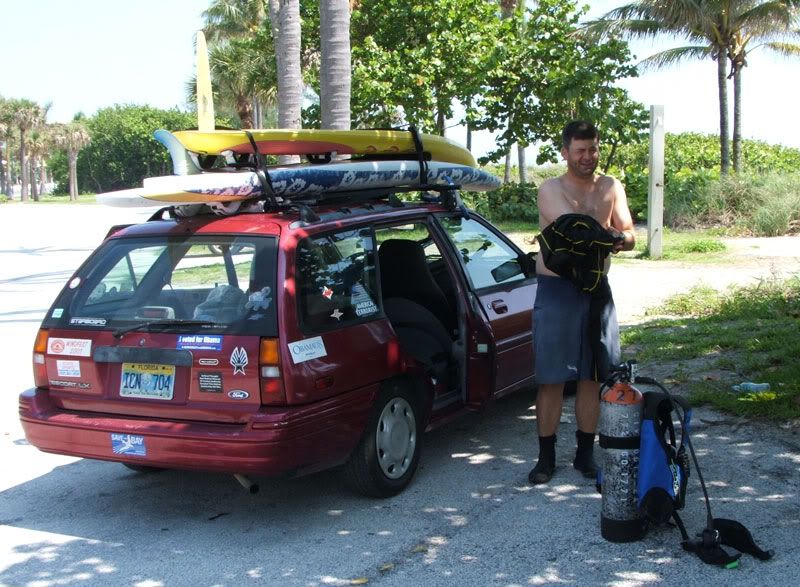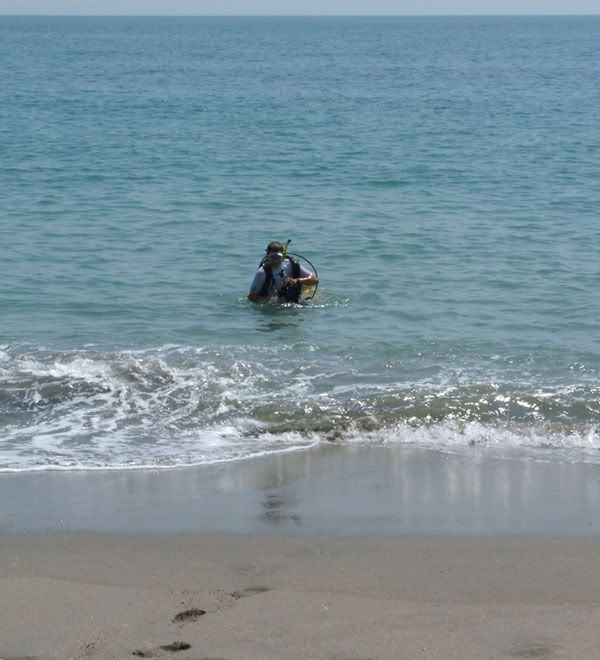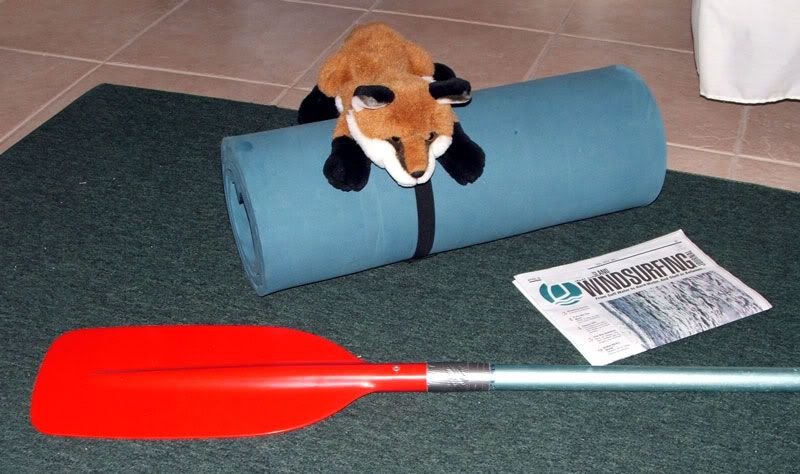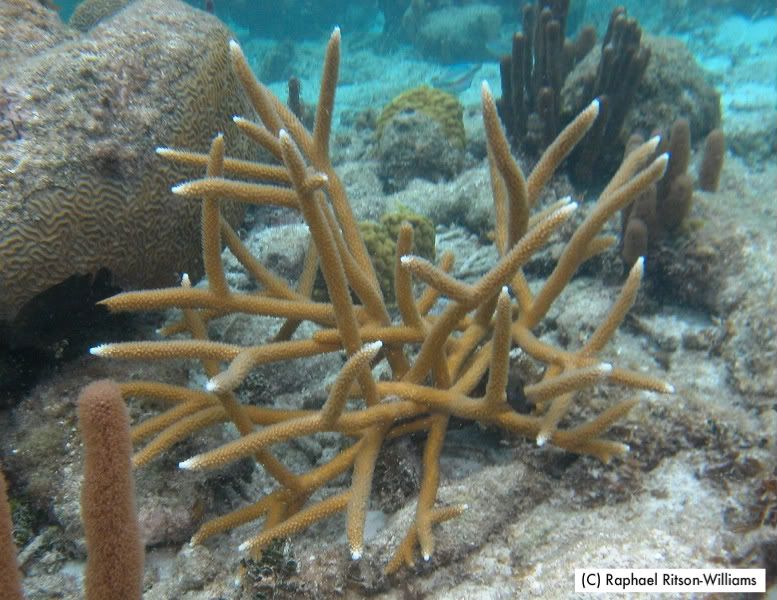This "Flying Gurnard" was resting on the bottom near the beach. He has a surprise for you at the end of the video.
The nearshore reef here is not built of coral, but rather by the sand-encrusted tubes of a special kind of polychaete worm that lives in dense aggregations. This type of worm reef only forms where there is a lot of wave action and sediment moving around. The purple thing in the center is an urchin. Jonathan takes lots of pictures of urchins because he's studying their ability to eat algae that is poisonous to other organisms.
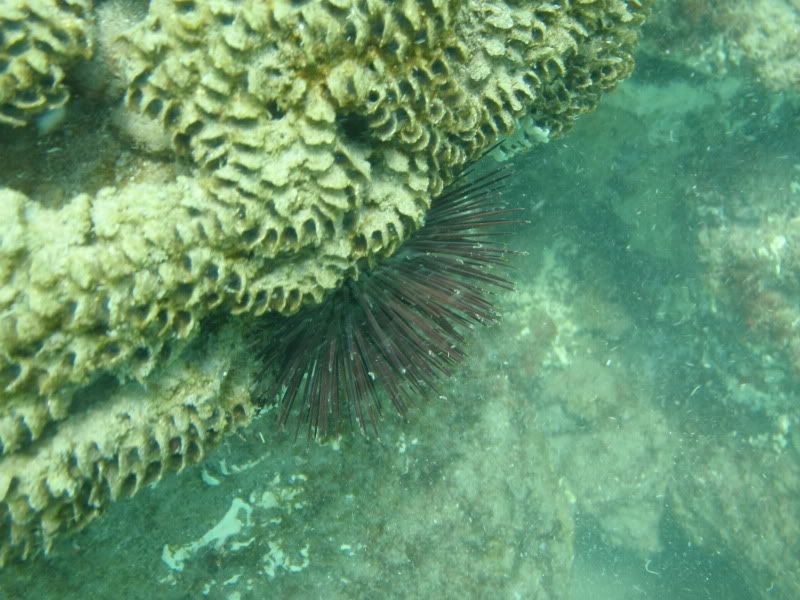
This is a closer-up picture of an urchin that shows the flexible tube-feet in between the hard spines.
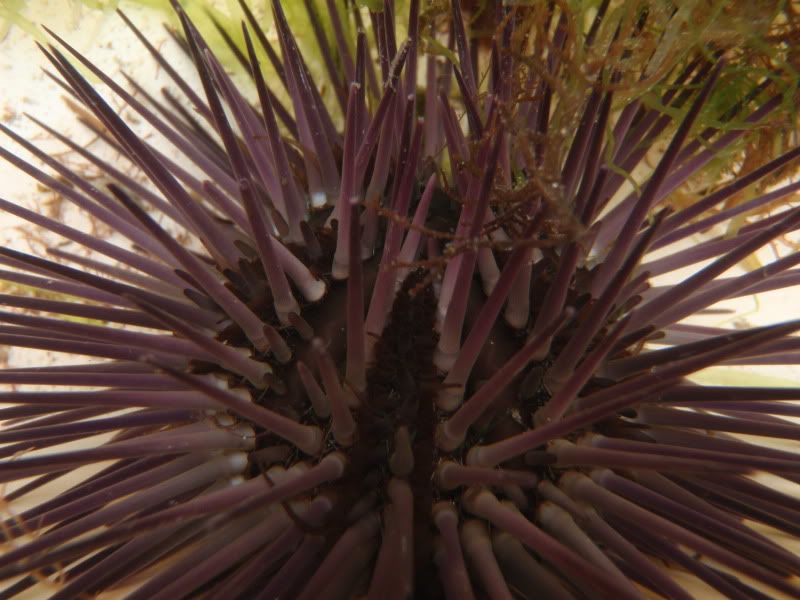
Here's a different type of urchin.
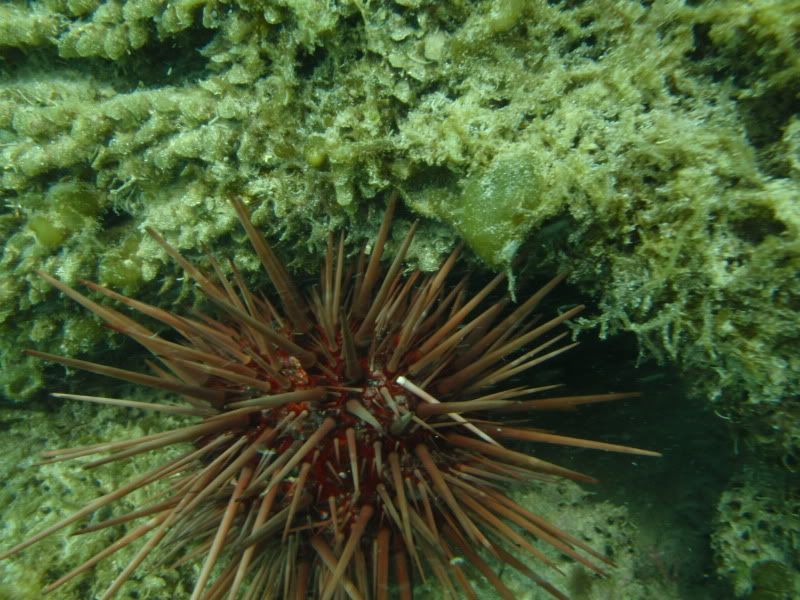
This is a spiny lobster. It's a good thing these guys reproduce rapidly, because they are heavily harvested by divers. (We haven't taken any yet, but it's tempting.)
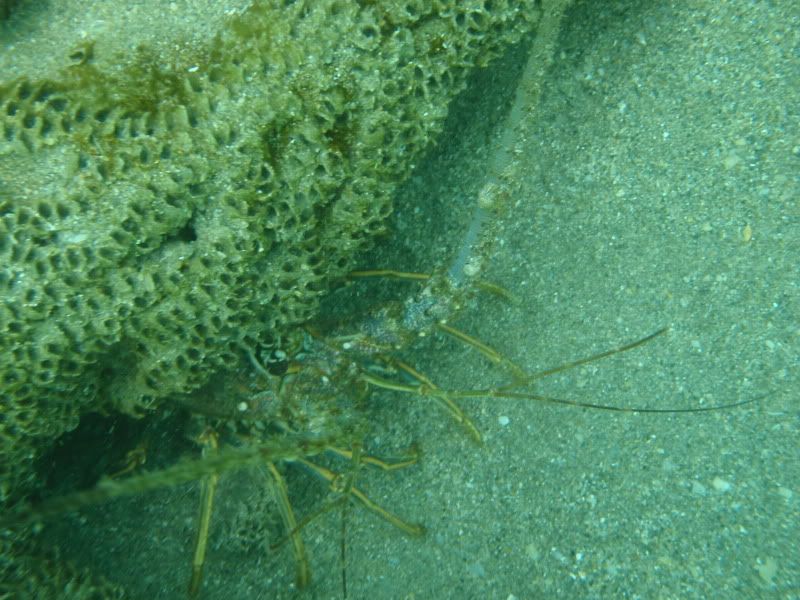
Some of the fish that hang around the worm reef are extremely well camoflaged. The next two pictures are poisonous stone fish. Can you see them?
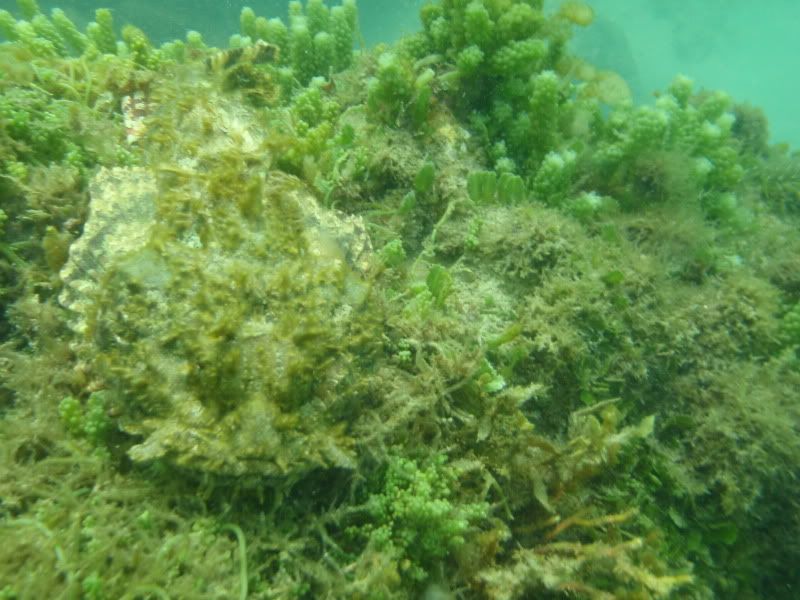
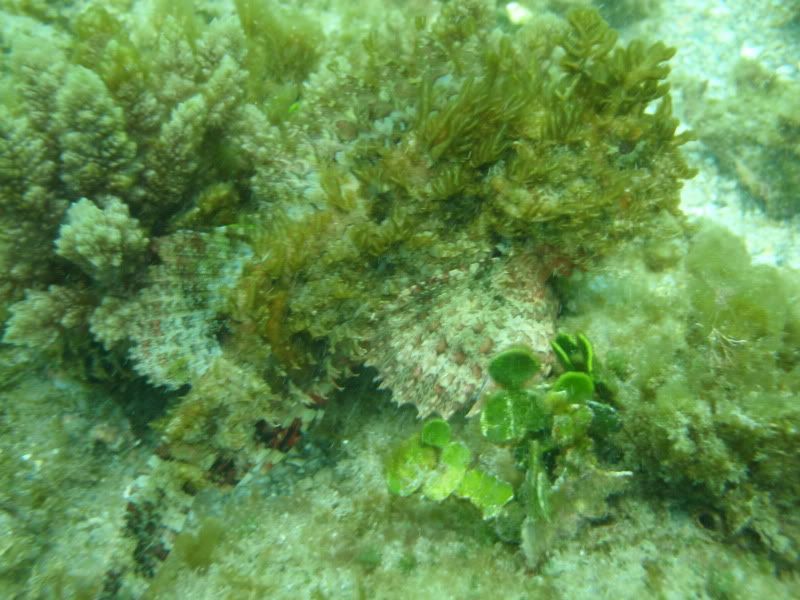
Other fish are more obvious, like this cute green blenny (not it's scientific name).
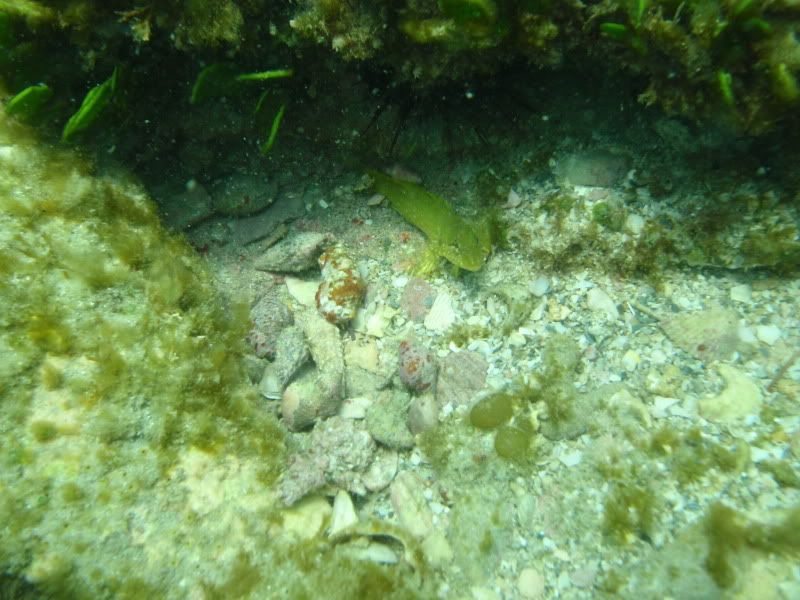
Or these juvenile fish. (I like how the background looks on this one.)
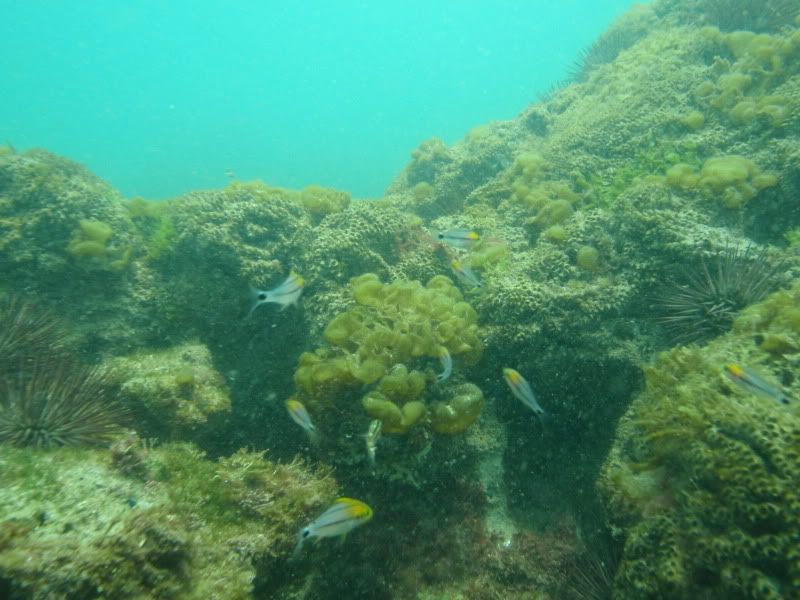
This young grouper is pretty big for a baby.
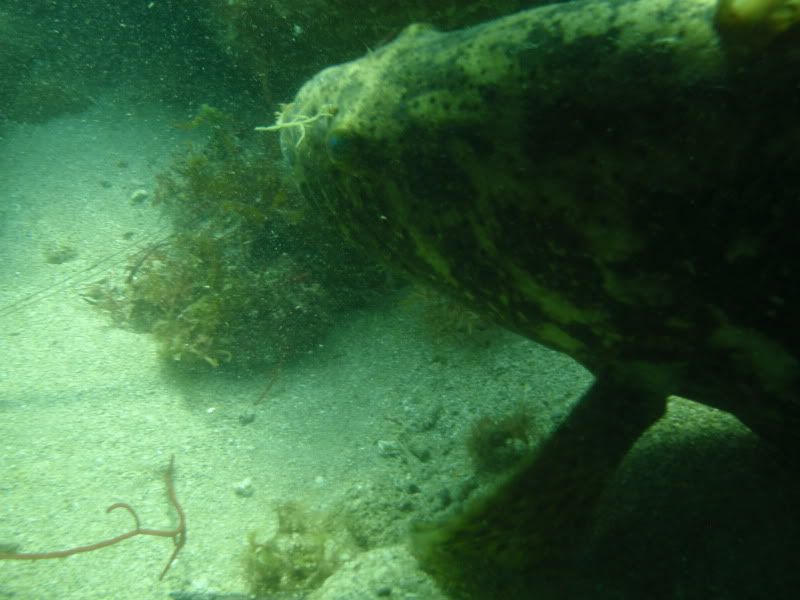
This is what a cowrie shell looks like when it's alive. The mantle (soft part of the animal) wraps all the way around from the aperture in the bottom of the shell to cover over the back. The head is on the right hand side of this picture. This individual was about six inches long! (Picture taken from an aquarium back at the lab.)
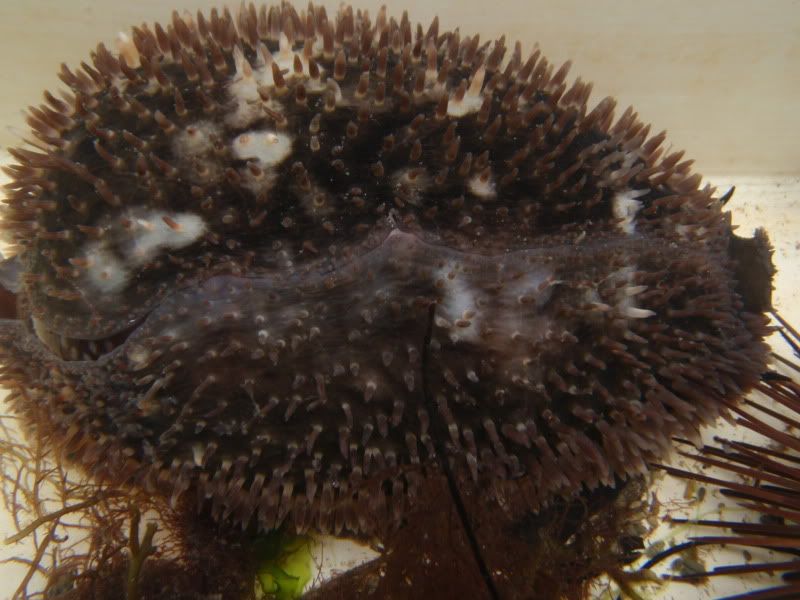
This is a polychaete worm tube, but of a different kind of worm than the one that builds the reef. This kind, a "Diapatra sp." lives alone.
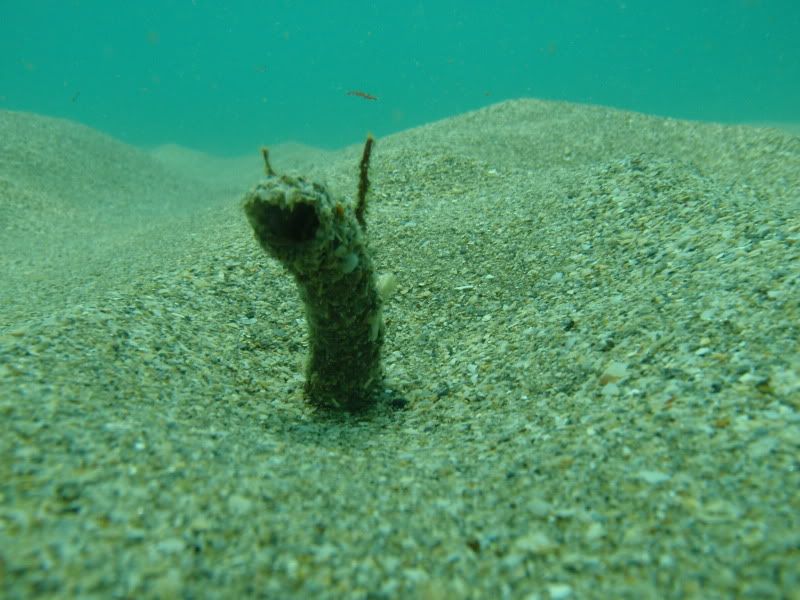
Most places we've dived the visibility in the water has been pretty good, but sometimes we'll run into a phytoplankton bloom like the one obscuring me here.
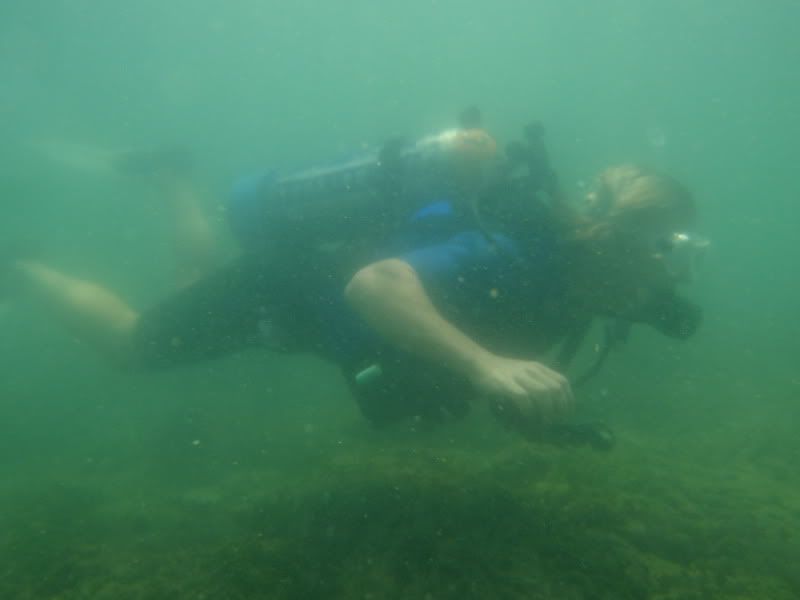
Mixed in with the worm reef are a lot of neat algae and "sessile" (not able to move) organisms like this orange sponge...

...and this blue tunicate (colonial seasquirt).
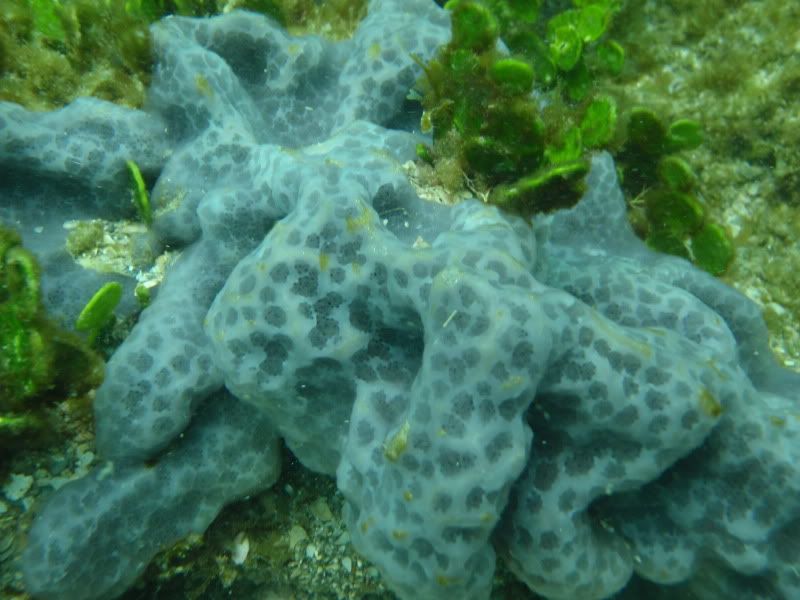
Oh, I promised my buddy Scott I would put a cool picture of him in my blog since the last one I put in here was goofy and unflattering. So here's Scott as a super studly scuba diver. Fierce.
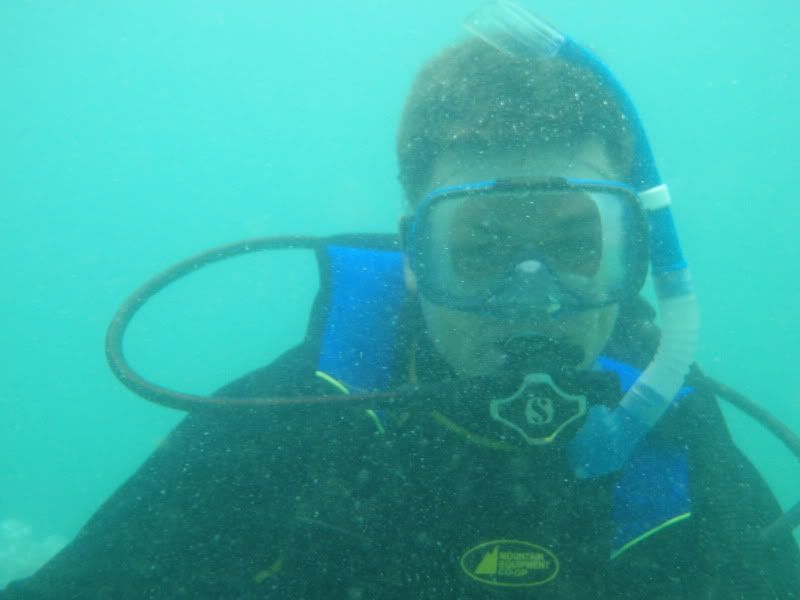
And here's Jonathan the photographer. Jon got a weird infection on his neck where his dive vest was rubbing him. The infection turned into a hideous, swollen abscess that had to be drained. Don't click HERE if you don't want to see the nauseating picture.
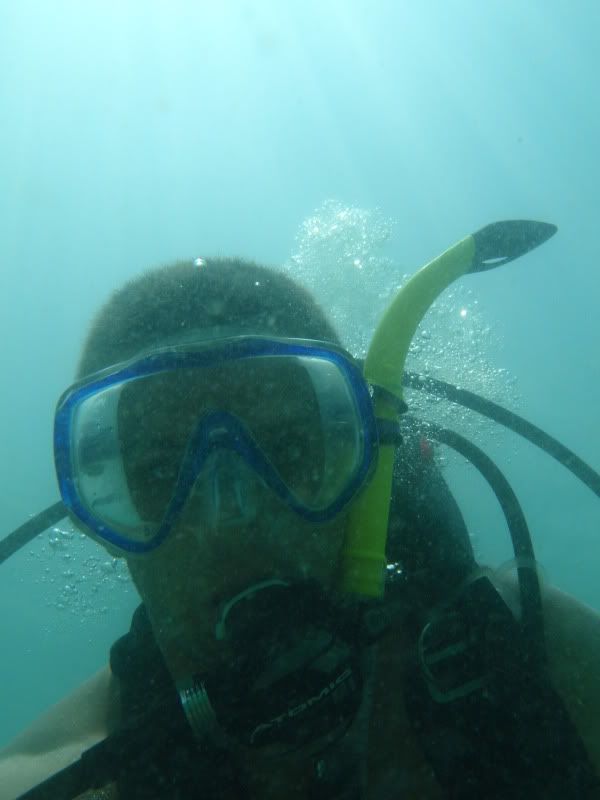
More of Jonathan's pictures later, perhaps.


